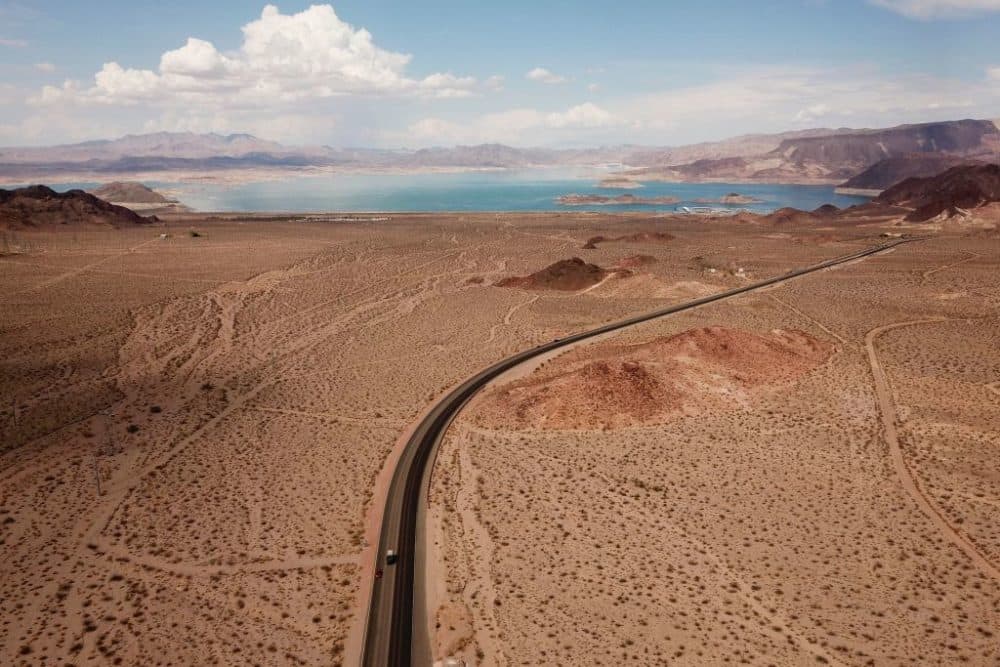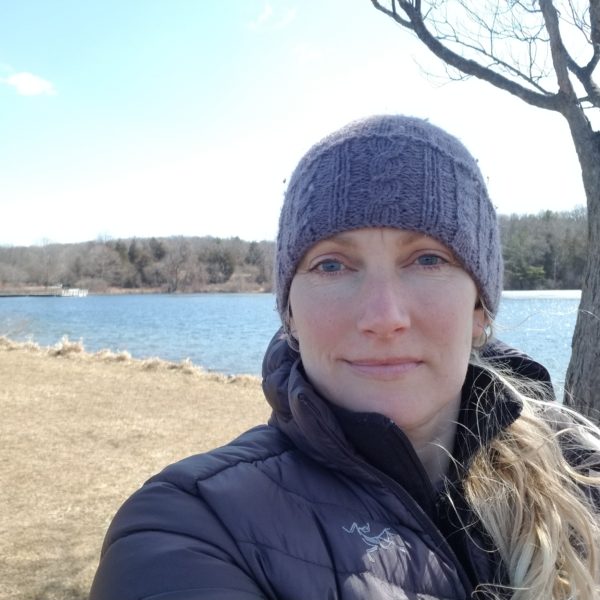Advertisement
How will the West adapt as the Colorado River diminishes?

Sign up for the On Point newsletter here.
Western states depend on the Colorado River for water. They're up against a reality that’s been a long time coming:
"It’s not like the river changed overnight. The river has been changing over the last 20 years at least," Jennifer Pitt says.
"But we were buffered from the impacts of the change on water in the water supply by draining reservoirs."
States have been drawing down so much water, that reservoirs are approaching the point where it may be impossible to pull more out of them. It's a scenario called deadpool.
Recently, six Western states did come up with a proposal for how to cut water. But one state wouldn't sign on: California.
Today, On Point: We're going to talk about why, and what's at stake.
Guests
Jennifer Pitt, Colorado River program director for the Audubon Society. (@JnPitt)
Bart Fisher, president of the Palo Verde Irrigation District Board of Trustee. Member of the State of California’s Colorado River Board. He farms 12,000 acres in Southern California, right on the Colorado River and near the Arizona border.
Kathryn Sorensen, director of research and professor of practice at Arizona State University. Formerly director of Phoenix Water Services as well as Director of the City of Mesa Water Resources Department.
Interview Highlights
Would you describe the Colorado River situation as a crisis?
Jennifer Pitt: “I would. The reservoirs are actually physical engineered structures that have particular ways in which they need to function. If the water in the reservoir gets too low, it could possibly drop below the intake tubes for hydropower and temporarily cause a situation where no water could fall out below the dam. That could be a crisis in the case of Lake Powell for the Grand Canyon. Can you imagine the Grand Canyon with no Colorado River flowing through it?
“It would be a crisis in the case of Lake Mead, or the tens of millions of people who rely on the water supply that flows down the Colorado River below Lake Mead in Arizona, in California, and not to mention in Mexico as well. Some of those places have some alternative water supplies. For instance, in the L.A. area, they also use water from the Sierra Nevada. But it would be effectively half their water supply that is threatened. And then there are other locations in Arizona and in Mexico where there is no alternative water supply. So those places are really looking at a crisis.”
The federal government asked the seven Colorado River Basin states for a plan to cut water. All came to an agreement – except California. What did the six states, besides California, agree to do?
Jennifer Pitt: “The six states agreed to reduce water uses, principally in the lower basin. There's some modest commitment from the upper basin states. And that's as it should be, they're using far less water than the lower basin states. So they all agreed on a way to reduce uses that effectively had every state, particularly in the lower basin, taking what you might call an equitable or a proportional share of the reductions.
“So the water users of Arizona would be told, 'You're going to have access to about 30% less water.' And within the state, they would use their existing laws, additional agreements between water users to try to ensure that the impact of that reduction is mitigated as much as possible. Equitably distributed, ensures cities remain viable and probably compensates agricultural water users to the degree they are losing their water supply. It would do the same thing for California.
"Really the difference between the six-state proposal and the California proposal is in California's assertion of its senior priority on the Colorado River. In the California proposal, which has also been handed to the federal government, there's a different distribution of shortages."
What happens in Arizona if California’s proposal is selected instead?
Kathryn Sorensen: “If we follow California's interpretation strictly, the law of the river as it is today, then the Colorado River water that is delivered through the Central Arizona Project canal into the cities of Phoenix and Tucson and all the area between them is cut first.
“I will say Arizona is very blessed to have very large and productive groundwater resources. We have very plentiful aquifers. However, the water in those aquifers is what we call fossil water. That means it's really old. It's been laid down over the eons as local rivers have flowed through central Arizona. It is not annually renewed at any significant rate. So it's like the Ogallala Aquifer in the central United States. To the degree we pump a lot of that water out and don't replenish it, then that water is lost forever and forecloses on opportunities for future generations to use that water.
“So while we have this groundwater to fall back on in the case of severe shortages in central Arizona, we also need to be careful of that groundwater use so that we're protective of future generations as well.”
On water use in California agriculture
Bart Fisher: “Our water usage here changes as our cropping patterns change. Farmers not only farm as a lifestyle, we operate businesses. For example, 20 or 30 years ago, there was a lot more cotton produced in our valley. I'd say in particular, over the last 20 years, we have increased the percentage of production devoted to alfalfa and other forage crops.
“Our irrigation district here has a diversion dam that is the only structure in the lower Colorado River basin that is not owned and operated by the Bureau of Reclamation. And we use an average of about five acre feet per acre of consumptively used water. We divert a lot more than that, but because we are immediately adjacent to the river, we are able to gather our drainage water and return it to the main stream of the river for use downstream by folks such as the Yuma area farmers, the Imperial Irrigation District and Coachella Valley Water District in California, as well as the country of Mexico.”
This program aired on February 13, 2023.

